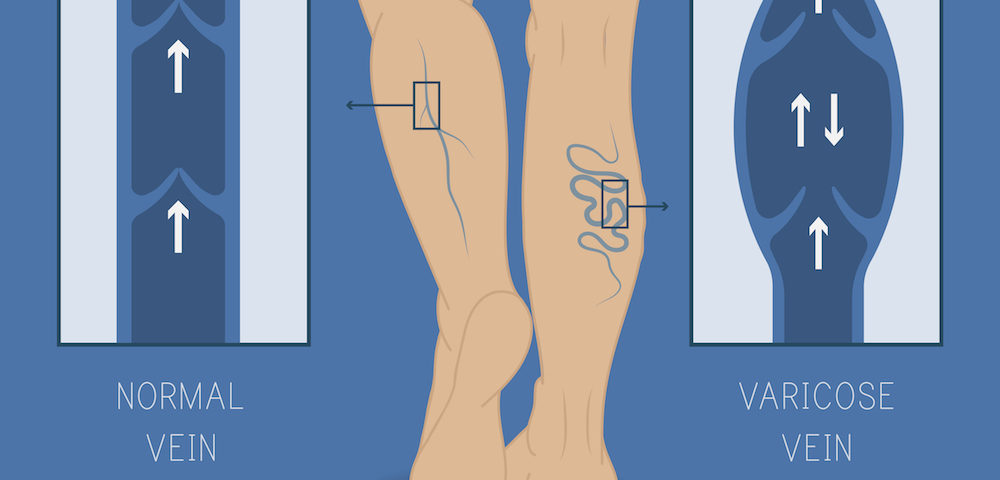
How Does Smoking Impact Vein Health?
January 26, 2018
Myth Busters: 3 Varicose Vein Myths We’d Like to Debunk
January 26, 2018At some point, you’ve probably heard of them — spider veins and varicose veins. Both are typically mentioned in a cosmetic context, as many individuals find both these conditions to be unsightly.
While spider veins appear as small webs of red, blue, or purple, varicose veins appear as large, blue, bulging veins. Both occur on the lower extremities, especially at the foot.
However, both these conditions may be related to deeper underlying issues related to what is known as venous insufficiency. Furthermore, individuals who suffer from insufficiency may also suffer from a condition that affects 10 percentof the US population known as restless leg syndrome.
Here’s how all of these conditions are related.
What Causes Spider Veins and Varicose Veins Anyway?
The condition underlying both of these symptoms is known as venous insufficiency. As the name implies, venous insufficiency is when the veins cannot properly pump blood back to the heart.
But why not? The unfortunate answer is that there a number of different pathologies that could cause venous insufficiency.
The veins already have a difficult time pumping blood back to the heart because they have to fight against gravity. Thus, when any of that pumping power is lost, or the valves are damaged, blood begins to pool in the lower extremities.
The two most well-known pathologies are a simple loss of elasticity in the veins due to aging, or stretching of the veins due to hormonal changes such as pregnancy. The latter is the reason why spider veins and varicose veins are slightly more common in women.
Are These Conditions Dangerous?
Many of these conditions are common. After all, about 10% of Americans suffer from venous insufficiency.
Individuals with venous insufficiency can suffer from a host of issues. These include painful achy legs, an inability to heal wounds in the lower extremities, and even a risk for deep vein thrombosis.
Both spider veins and varicose veins point to venous insufficiency of some form, but, surprisingly, both these conditions do not necessarily co-occur.
If an individual suffers from spider veins alone, they may not suffer from the other issues of venous insufficiency. However, varicose veins may be a high indicator for deeper issues.
The Relation to Restless Leg Syndrome
Restless leg syndrome is a condition that is both fairly common and very difficult to treat. Solutions for restless leg syndrome have ranged from iron supplements, to dopamine-facilitating drugs, to placing lavender soap under one’s sheets. As a result, doctors are often at a loss as to how to help individuals with restless leg syndrome.
Some phlebologists (vein doctors) however, feel that restless leg syndrome is simply a case of veinous insufficiency. The painful, achy, burning feeling in the legs, and especially the feet, seems to very strongly match the symptoms for venous insufficiency.
What Can I Do to Treat Venous Insufficiency?
Depending on the symptoms a patient is experiencing, there are many ways to treat venous insufficiency.
At the lower end of the spectrum, patients can take every day measures such as avoiding standing or sitting in one position for too long, making use off compression garments to improve circulation, or also elevating their feet to improve circulation.
If a patient specifically wants to treat spider veins or varicose veins, options like sclerotherapy are available to cause the weak veins to collapse in on themselves, and allow blood to reroute through more efficient routes through the body.
Doctors may be better able to assess what an individual needs through proper diagnostic techniques such as ultrasounds to determine the extent of an individuals’ venous insufficiency.
If you want to know more, call the Vein Center of Maryland to schedule an appointment. We are conveniently located in Westminster, Eldersburg, Baltimore, Hunt Valley and Bel Air.
We also service Ellicott City and Columbia in Howard County.



